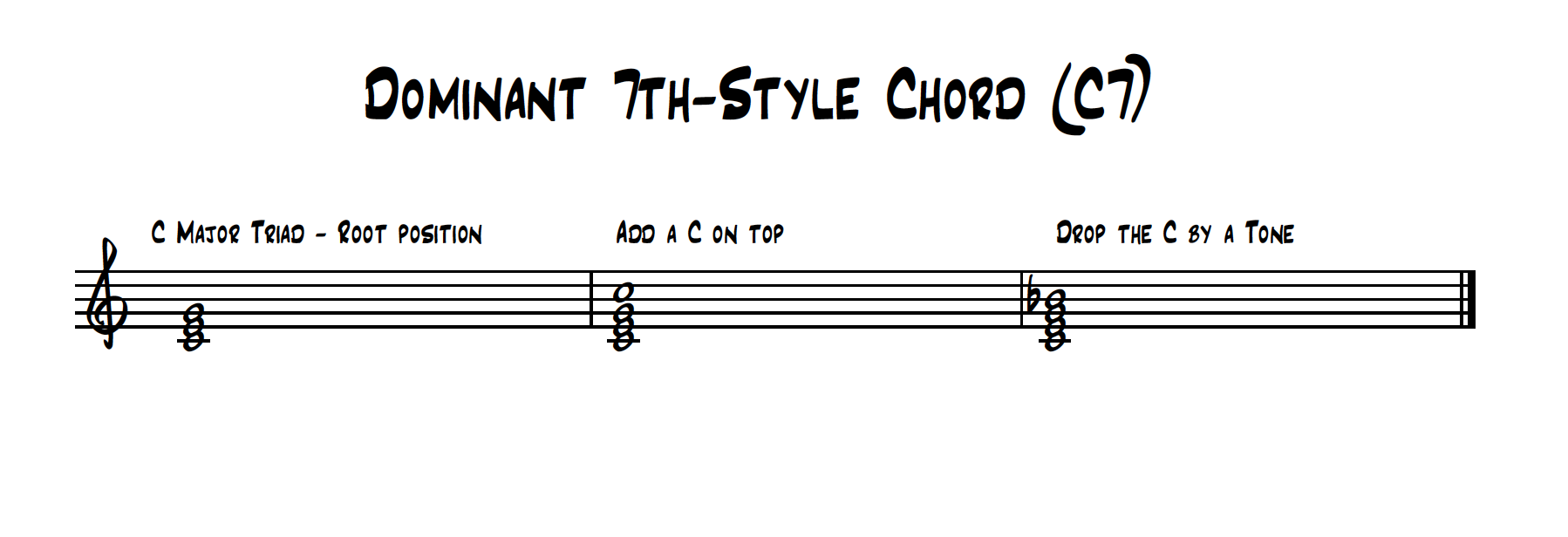“Jazz and blues musicians came along, stole the concept and started using 7ths all over the place”: Learn how to understand and use dominant 7th-style chords
If you woke up this morning, feeling a little blue, you’re going to need to use some 7ths in your music. Let us help you get over your gloominess and show you how they work.

Jazz and blues musicians often personify the very art of being cool, but we have to ponder whether they would be half as cool (musically speaking) if they didn’t constantly use 7ths in their music.
When you add a 7th to a triad, you are in effect adding what is known in musical circles as an ‘extension’.
There are different varieties of 7th, but we’re going to concentrate on one specific type, which confusingly may be described differently, depending on the type of musician you happen to be conversing with.

To be clear, here’s what we’re referring to; let’s start with a triad of C major. We’re using the notes C, E and G. Now imagine that you’re adding another C, but this one is at the very top of your chord. Now take that top C and drop it by a tone (or two semitones, if that’s easier to work out.) You should now have the notes C, E, G and Bb.
You’ll doubtless hear that this sounds like a ‘bluesy’ chord, which is for very good reason!
You can apply this formula to any other triad or chord, always adding the 7th a tone below the root note.
When you speak to jazz, blues, rock or pop musicians, and ask for a chord of C7, this is what you will get.
Sure, they may take those notes and shuffle them around a bit, like deckchairs on a ship, but these notes will all be there!
If you find yourself talking to a classical musician, you may find yourself needing to describe this very same chord as something slightly different. It can sometimes be described as a ‘dominant 7th-style’ chord, which is due to its original designation within the realms of classical music.
Want all the hottest music and gear news, reviews, deals, features and more, direct to your inbox? Sign up here.
Using this style of 7th chord was a compositional device which was almost entirely reserved for chord V (aka the dominant chord) in classical circles. This obviously gets a tad confusing, if it’s not being used on the dominant, hence using the word ‘style’ gets you out of that 7th-shaped hole.
Meanwhile, jazz and blues musicians came along, stole the concept and started using 7ths all over the place. Hence it became part of the contemporary musicians vocabulary that a ‘7th’ would always refer to the note that was one tone below the root of the chord
Going minor
One other very cool point about 7ths is that you can apply the exact same process to a minor triad.

Using the notes C, Eb, G and Bb will present you with the chord we describe as C minor 7. It obviously adopts a minor tonality, but the presence of the 7th makes it sound fairly unique, and slightly enigmatic. Nice!
But, there is one further point that we need to clarify. You would be forgiven for thinking that if you described a chord as C minor 7 (Cm7), you could employ the same terminology, to describe its major counterpart.
That would make an awful lot of sense, except…you can't! If you say to a musician that you would like a chord of C major 7, you will get a very different style of chord, which will not be what you want!
Feeling blue
Whether you choose to add 7ths to your music will largely be informed by the style of music you are writing.
They are not used in pop to anything like the same degree that they are used in blues, rock and jazz, but rules are there to be broken, and if it sounds good, go with it!
Within the context of the traditional 12-bar blues, it is worth noting that each and every chord will adopt the use of a 7th. It's part of the sound and make up of the genre, and being one of the oldest popular genres in existence - nobody can argue with that!
Roland Schmidt is a professional programmer, sound designer and producer, who has worked in collaboration with a number of successful production teams over the last 25 years. He can also be found delivering regular and key-note lectures on the use of hardware/software synthesisers and production, at various higher educational institutions throughout the UK
